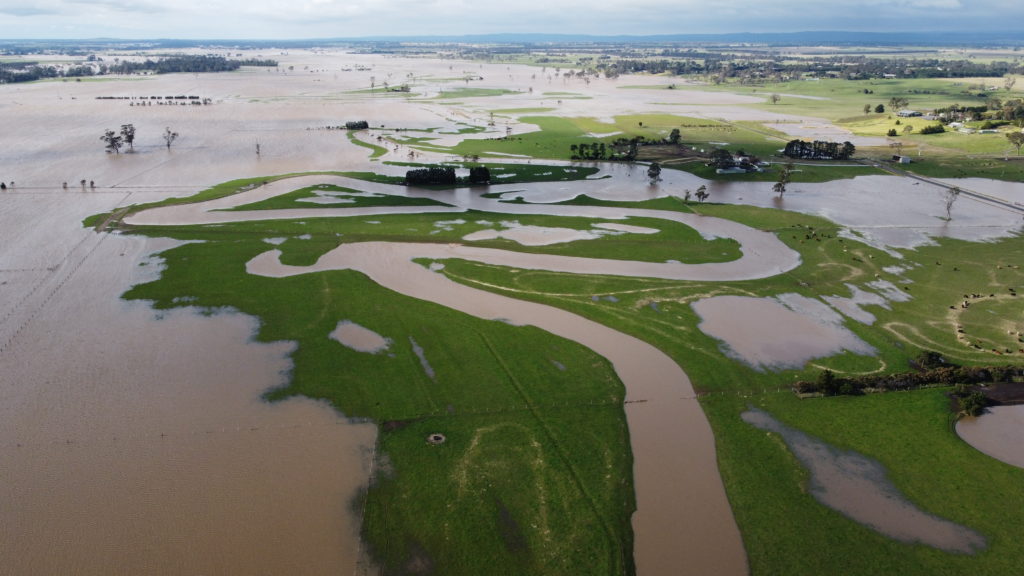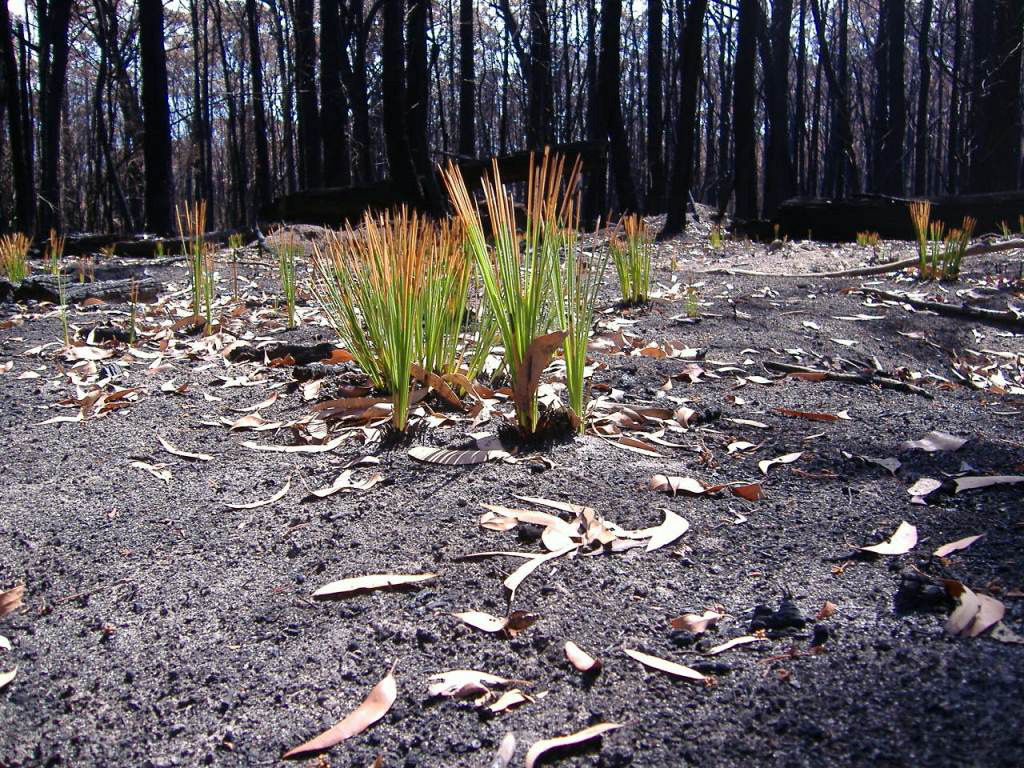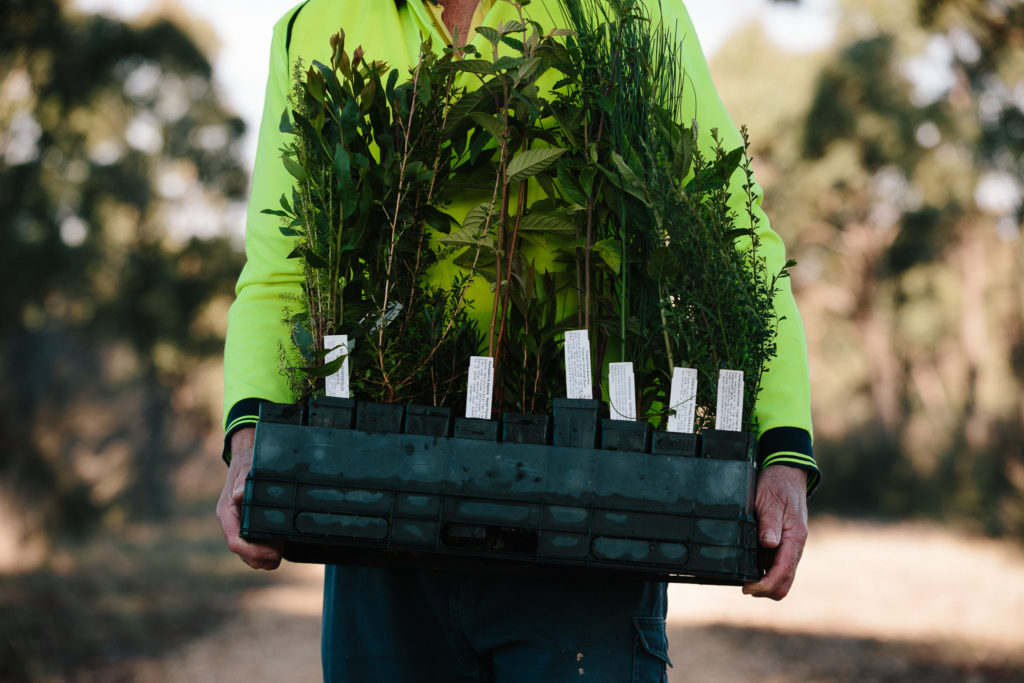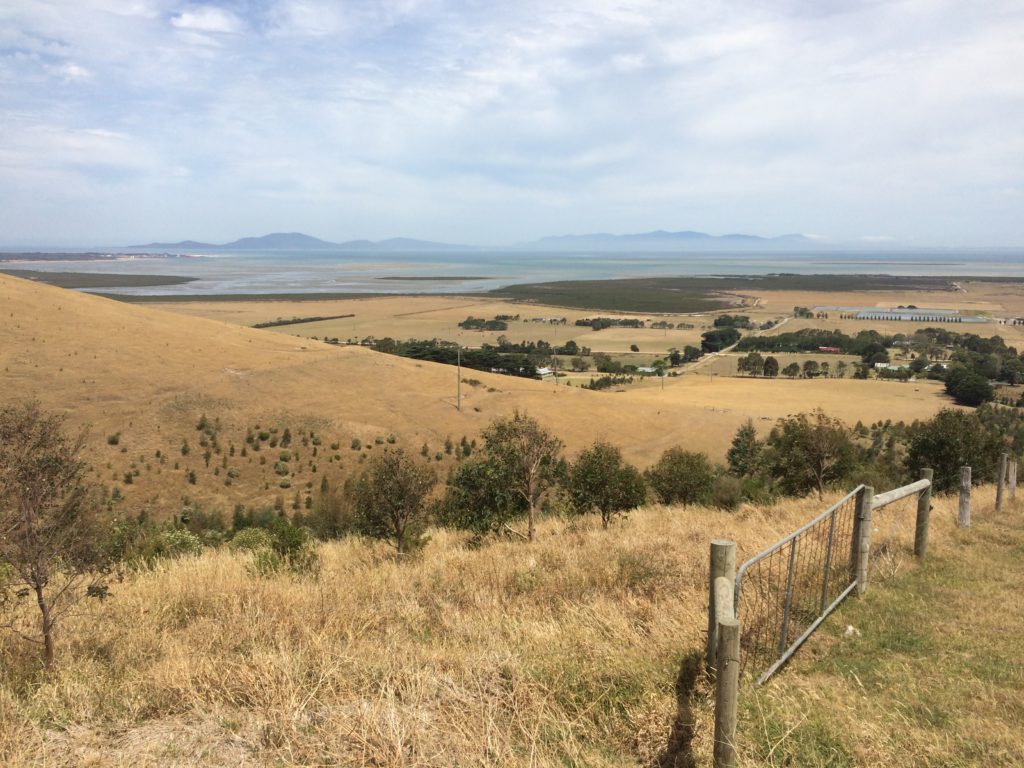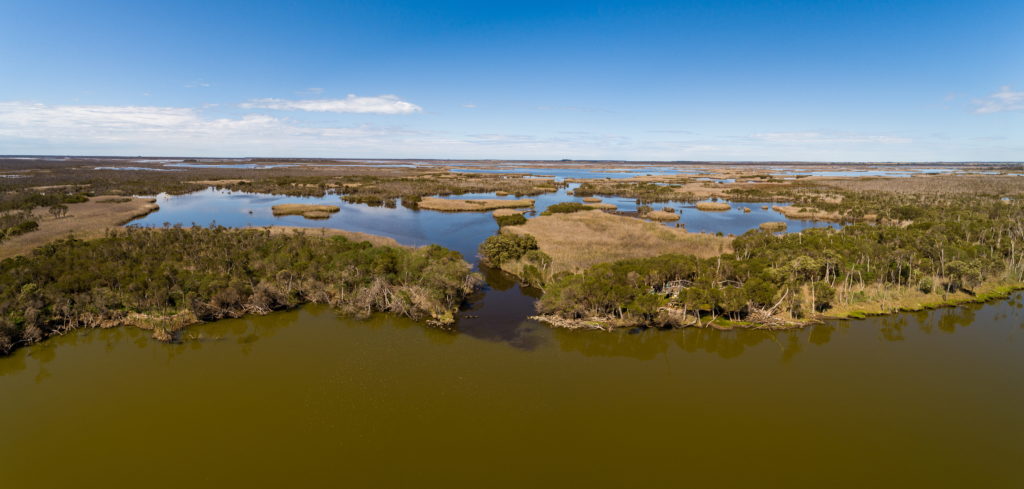The climate in the West Gippsland region, like much of Australia is variable, this means that some periods are cooler and wetter than average (as was the case in the 1970s), while others are hotter and drier (such as during the Millennium Drought). However, due to climate change, the long-term average is changing. The future climate will be different from that in the past.
The West Gippsland Regional NRM Climate Change Strategy was developed in 2015 in collaboration with partners and remains a relevant guide for climate action in the region.
Since the Strategy was developed there have been improvements to modelling and climate projections. Local-scale projections data for Victoria are now available out to the 2090s via Victoria’s future climate tool.
The regional climate – looking back and considering the future
The Regional Weather and Climate Guide provides a summary of changes in the West Gippsland region over the last 30 years2. Additional information on the future climate is provided in the Gippsland Climate Change Projection report1.
The region has mild to warm summers, winters are mild near the coast. Further inland, it is cooler in the foothills and cold in the ranges where there are frequent frosts and some snow.
Rainfall is comparatively high but varies across the region. The elevated areas of the Great Dividing Range and Foothills, the Strzelecki Ranges and the south-western part of the region receive high rainfall which falls as snow on the higher peaks in winter.
Annual rainfall decreases in the eastern part of West Gippsland due to the rain shadow of Wilsons Promontory and the Strzelecki Ranges. East Coast Lows can deliver heavy downpours which are associated with flooding.
Heatwaves
Over the last 30 years there have been more hot days and more consecutive days above 35°C.
In 2019, Wilsons Promontory recorded its hottest December day (40°C) since 1920 and Sale recorded its hottest December day (42°C) since 19403.
In the future the temperature will continue to increase and by the 2030’s, daily maximum temperatures are expected to increase by 0.9 to 1.8°C (compared with the 1990s).
Rainfall
Over the last thirty years annual rainfall has been relatively stable, with usually about 60mm difference from one year to the next. Seasonal rainfall, especially in Autumn and Spring has decreased and this trend is expected to continue.
In the Traralgon area Autumn and Spring rainfall has declined by 42mm when compared with the previous 30-year period. The Sale area and parts of South Gippsland tend to be more variable and less reliable in Autumn and Winter than other parts of the region.
In 2018, Giffard had its lowest rainfall for the nine months from January – September on record (200mm) breaking the previous record of 213mm from 19274.
East of Traralgon, the Autumn break which represent the first good rains of the winter period has been occurring about one month later than it did in the period 1959-1988.
In the future, the region is expected to experience more frequent and more intense downpours and flooding events, such as those experienced in Central and South Gippsland in 2021.
Frost
Spring frosts have become more common inland around Traralgon. In Yallourn, there were an average of eight more days with the potential for frost between 1989-2018 compared to 1959-1988.
Sea level rise and coastal hazards
Coastal areas such as Inverloch, Walkerville, the Gippsland Lakes and the Ninety Mile Beach are already being impacted by inundation and erosion. In the future it is likely that this will happen more often due to the combined effects of sea level rise and storm surges.
By the 2030s the sea level at Inverloch is expected to rise by 12cm, increasing to 40cm in the 2050s. Similar increases are expected at Seaspray (13cm and 40cm respectively).
Changes in ocean temperatures, currents and acidification will also impact on marine ecosystems.
Fire
Large bushfires have occurred throughout Gippsland’s history. In the last two decades, the pattern of recurring major fires has intensified and is consistent with an increased frequency of dry years.
Between 2000 and 2020, over two million hectares were burnt by bushfire at least once in Gippsland, and some places up to four times5.
In the future, fire weather is expected to become more dangerous, with extended fire danger periods and with more frequent and intense bushfires.
What will the future climate be like?
Climate analogues describe two places/times that share similar climatic conditions. They are a useful way to predict future climate scenarios.
Climate analogues for selected towns in West Gippsland*6
| 2030 | 2050 | 2090 |
|---|---|---|
| Wonthaggi climate looks like Moe | Wonthaggi climate looks like Lakes Entrance | Wonthaggi climate looks like Tumut |
| Traralgon climate looks like Sale | Traralgon climate looks like Bairnsdale | Traralgon climate looks like Mudgee |
| Sale climate looks like Bairnsdale | Sale climate looks like Wangaratta | Sale climate looks like Dubbo |
| *Emissions scenario 8.5 (maximum consensus) |
Impacts
Climate challenges for natural resources, water and agriculture have been summarised from the Draft Regional Climate Change Adaptation Strategy for Gippsland as follows:
- Continued reductions in stream flows and a decrease in water availability will have broad impacts across the region, including increasing competition for water and will be noticeable during periods of drought
- Gradual changes are likely in the composition of vegetation communities as more resilient species cope in a warmer and drier climate
- Fauna species may experience changes in behaviour, abundance, and distribution as well as potential shifts in regular cycles such as migration or breeding
- More dramatic events such as large-scale bushfires are likely to occur more frequently and with greater severity, these events have the potential to trigger devastating and long-term impacts on the natural environment, water supply and local communities
- Storms and flooding, in conjunction with fires, can contribute to impacts on receiving waters such as the Gippsland Lakes and Corner Inlet and other estuaries and wetlands
- Coastal areas already subject to a range of hazards are highly vulnerable to erosion caused by sea-level rise and storm surge events
- Climate change will impact Traditional Owners’ tangible and intangible cultural heritage including changes to plants and wildlife, reduced stream flows and impacts on cultural heritage sites through inundation, erosion, fires and flooding
- The projected increase in average temperature, coupled with reduced rainfall will greatly impact the cropping, pasture, vegetable and fruit varieties that farmers can produce. Projected increases in severe weather events (heat, storms, wind) will also have a significant effect on horticulture and dairy production7.
Adaptation
Climate change adaptation aims to reduce potential damage, to take advantage of opportunities, or to cope with the consequences. In this way adaptation may accommodate the medium and long term impacts of climate change, such as sea level rise, increases in temperature and changing rainfall patterns.
The West Gippsland Regional NRM Climate Change Strategy, identifies a range of measures to support adaptation including:
- Supporting the protection of core habitat areas of native habitat in good condition
- Removing or minimising existing stressors
- Promoting best management practices on farms and in forests
- Adopting engineering solutions to protect key natural and cultural assets
- Adaptive management and effective monitoring
- Promoting integrated catchment management and inter-agency collaboration.
Natural assets themselves may change dramatically in response to the timing, scale, and magnitude of a changing climate. For some natural assets, the options to support adaptation may be limited or infeasible and for these assets this may involve changing management objectives.
Therefore, it is important to consider how natural assets or ecosystems may respond to climate change and whether they have the capacity to persist, transition or even transform entirely.
Persist
- The asset or system can cope with change and largely stay the same. This assumes that the magnitude of change is small, predictable, and current management objectives will be suitable or require only minor adjustment.
Transition
- The asset or system deliberately adapts to change. This assumes that the magnitude of change is greater, less predictable and likely to persist. Current management objectives will need to be adjusted.
Transform
- The asset or system fundamentally transforms in response to change. This assumes that the magnitude of change is significant, unpredictable and management objectives will need to change.
Applying an adaptation lens for RCS implementation will address the following changes:
- Making decisions for multiple possible futures
- Employing flexible and adaptive planning processes
- Identifying and planning for future decisions
- Strengthening the adaptive capacity of people and organisations8.
Useful resources
Climate Change Adaptation Resources
Victorian Government Climate Change Adaptation Resources, provides local and regional guides and data to support decision making.
Coast Adapt
Coast Adapt, is an information delivery and decision support framework. It is for anyone with an interest in Australia’s coast, the risks it faces from climate change and sea-level rise, and what can be done to respond to those risks.
Adapt NRM
AdaptNRM, is a national initiative that aims to support NRM groups in updating their NRM plans to include adaptation planning.
Climate change adaptation
Incorporating climate change adaptation into Catchment Management, provides a process-based guide on how to incorporate climate change.
Climate Ready Natural Resource Management
Climate Ready Natural Resource Management, provides access to regional natural resource management planning for climate change information developed by each of the ten Catchment Management Authorities across Victoria. This includes information on regional climate change projections, impacts of climate change on natural resources, priority areas for climate change adaptation, carbon sequestration and management opportunities.
Managing the Gippsland Lakes
The main lakes and fringing wetlands of the Gippsland Lakes Ramsar Site are a system in transition that has been occurring for over 100 years. The substantial body of knowledge, of the condition and management of Lake Wellington and its fringing wetlands, is being consolidated and summarised to best inform management of the system. The intention is to maintain ecological character or ensure that the system transitions to a state that maximises ecological values9.
Mitigation
Climate change mitigation involves reducing the amount of greenhouse gases produced and/or increasing the sequestration of carbon. In West Gippsland there are a range of activities, such as investment in renewable energy sources or transition away from high emission farming systems, which will decrease regional carbon emissions.
The West Gippsland Regional NRM Climate Change Strategy identifies options to potentially increase carbon storage in plants and soils, while also protecting land, water, biodiversity and the coast and marine environment.
These include:
- Agricultural system changes – including changes to land use and adjustments to cropping and grazing practices with the aim of improving soil carbon
- Biodiverse plantings, riparian plantings, farm forestry and natural regeneration – to increase terrestrial carbon stocks
- Supporting blue carbon associated with wetlands and coastal environments10.
Blue Carbon in West Gippsland
Blue Carbon stock assessments undertaken by Deakin University found that the West Gippsland region has an estimated total blue carbon stock of 1,320,765.69 tonnes, a total carbon value of $19,811,485 over the top 30cm of sediment at $15 Mg-1.
It should be noted that because sampling was confined to the top 30cm of sediment, the carbon estimates are highly conservative. In fact, since organic carbon is stored at depths up to several metres, the true value of these habitats is significantly greater9.
The carbon market has the potential to support several directions/outcomes of this RCS including, retention and protection of biodiversity on private land, establishing Biolinks, stewardship and improving soil health. A carbon sequestration analysis is being undertaken in nine CMA regions to examine potential carbon yields, implementation costs and identification of complementary environmental and socio-economic benefits (co-benefits). This involves an analysis of the Environmental Plantings and Plantation Forestry Emissions Reduction Fund (ERF) methods on private land.
Victoria’s CMAs are also exploring options to facilitate and enable natural resource management investment (NRM) across the region, including efforts to connect landholders, RCS partners, and the private sector with the carbon market.
Opportunities and Management Directions
Established management directions will be delivered through existing sub-strategies and action plans.
Opportunities will be further developed or pursued through RCS implementation to help support Integrated Catchment Management in the region.
Climate change adaptation and mitigation is embedded across all of the RCS themes. Continued implementation of the West Gippsland Regional NRM Climate Change Strategy (a sub-strategy of the RCS) and Gippsland Regional Adaptation Strategy will help coordinate efforts across partners. Future iterations of the RCS will see adaptation and mitigation planning fully embedded into the RCS renewal process.
Local area forums will also have a role in identifying local adaptation and mitigation options drawing on the available science and technical information and local knowledge.
| MANAGEMENT DIRECTION | DETAILS | ESTABLISHED MANAGEMENT DIRECTION | OPPORTUNITY | PARTNERS |
|---|---|---|---|---|
| Implement the West Gippsland Regional NRM Climate Change Strategy and Gippsland Regional Adaptation Strategy | Includes strategies incorporated into this RCS and additional adaptation and mitigation options | ✔ | ✔ | All RCS Partners |
| Build capacity and support the community to identify and implement local adaptation and mitigation priorities | To be progressed through RCS local area forums | ✔ | ✔ | WGCMA, DELWP, Local Government |
| Commence a process to review management objectives for high value assets at risk due to climate change | Including freshwater and coastal ecosystems, sensitive vegetation communities and sub-alpine habitats | ✔ | WGCMA, DELWP, Parks Victoria, EGCMA, NECMA, GBCMA |
Regional Outcomes
This section sets out the long term (20-year) and medium term (6-year) outcomes as they relate to climate change planning. These outcomes have been regionally specified in collaboration with RCS partners. It is expected that the management directions and outcomes for the other themes will also contribute to climate change adaptation in the West Gippsland region.
The RCS outcomes hierarchy can be found here with a more detailed matrix showing how the medium term outcomes align to local areas here.
Long term outcomes – by 2041 we will:
Regionally specific outcome
- Embed climate-adapted decision making into the planning and delivery of land, water and biodiversity programs.
Medium term outcomes – by 2027:
Regionally specific outcome
- Climate change adaptation and mitigation options have been incorporated into the renewal of sub-strategies and plans.
References
- Clarke, JM, et al. Gippsland Climate Projections 2019. [Online] 2019.
- BoM; CSIRO. Regional Weather and Climate Guide. A climate guide for agriculture in West Gippsland. Australian Bureau of Meteorology. [Online] 2019
- BoM. Special Climate Statement 73 – extreme heat and fire weather in December 2019 and January 2020. 17 March 2020: Australian Government Bureau of Meteorology, 2020
- BoM. Special climate statement no. 66. An abnormally dry period in Eastern Australia 1 November 2018: Australian Bureau of Metrology, 2018.
- DELWP. Gippsland Bushfire Management Strategy 2020. East Melbourne : Department of Environment, Land, Water and Planning, 2020.
- CSIRO. Climate Analogues. Version 1.1 . Climate Change in Australia. [Online] Commonwealth Science Industrial Research Organisation, 24 December 2020. [Cited: 21 February 2021.]
- DELWP. Draft Gippsland Regional Adaptation Strategy : Department of Environment, Land, Water and Planning, n.d.
- CSIRO. AdaptNRM. Adaptation Planning. [Online] 2014. [Cited: 28 June 2021.]
- Victorian CMAs. NRM Climate. Climate Change and Adaptation Initiatives. [Online] Victorian Catchment Management Authorities, April 2020. [Cited: 28 June 2021.]
- WGCMA. West Gippsland NRM Climate Change Strategy. Traralgon : West Gippsland Catchment Management Authority, 2015.
- DELWP. Victoria’s Climate Futures Tool 2019. [Spatial Data] East Melbourne

